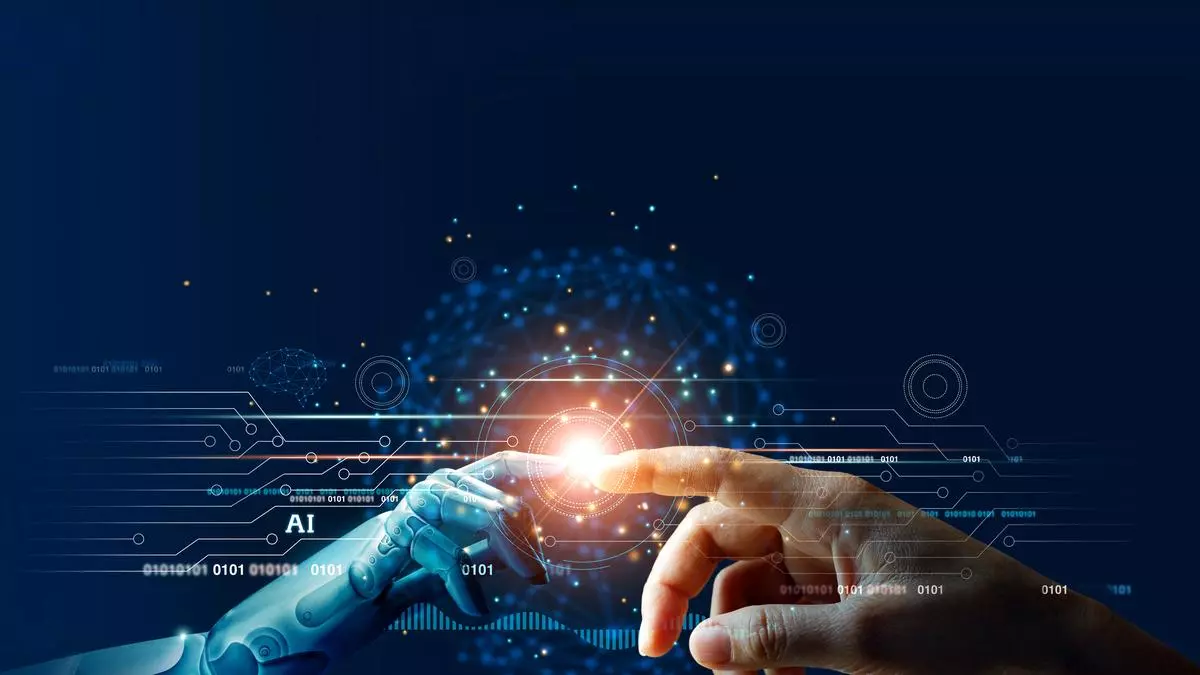Farm-to-Future: How AI & robotics are revolutionising modern agriculture practices
Since the dawn of civilisation, agriculture has been crucial to human existence, nourishing societies and fostering innovation, development, and growth. However, the modern age has brought daunting challenges, transforming bustling landscapes into barren stretches. Climate change, resource depletion, traditional techniques, and the pressure to feed 8.1 billion people clearly illustrate the need for agricultural changes.
In the present scenario, elementary tools and labour-intensive farming methods are giving way to mechanised farming, driven by the integration of AI and robotics. These new-age technologies are not only revolutionising agricultural practices but also setting elevated standards to optimize food production. As the threat of a burgeoning population and food crisis looms large, implementing AI and robotics in farming is a strategic imperative for protecting crop yield from critical threats.
Application of AI in Agriculture
In the past, farmers struggled with effective management and decision-making, but the advent of AI algorithms has paved the way for a new era of precision farming. This practice harnesses the power of AI to monitor and manage soil fertility by determining the exact water levels of each plant or field segment. The actionable insights provided by these sensors protect crop health, empowering farmers to apply water, fertilizers, and pesticides with greater accuracy.
In addition, data analytics helps predict crop yields and optimise resources. By analysing current and past conditions, AI can suggest optimal crop choices and resource allocation, ensuring financial stability and crop health. This data-backed approach enables farmers to make informed decisions regarding planting and harvesting, focusing on crops with the highest profits and minimal resources, thus saving unnecessary expenditures.
Unmanned Aerial Vehicles (UAVs), popularly known as drones, have also made significant strides in transforming the dynamics of agriculture. With the ability to soar high, AI-powered drones capture high-resolution images and gather crucial data that reveals variations in crop health, pest infestations, and soil quality. By offering insights invisible from a ground level, drones equip farmers to address challenges before they escalate.
Uses of robotics
Robotics is redefining agricultural practices by facilitating the adoption of autonomous tractors and harvesters. Equipped with AI capabilities, these machines can operate without human intervention, transforming labor-intensive tasks such as plowing, seeding, and harvesting with heightened precision and ease. With the capacity to cover large areas at faster speeds, these autonomous machines are crucial for boosting efficiency and crop yield.
There has also been a rise in fruit-picking robots capable of harvesting delicate fruits and vegetables. Backed by their analytical prowess and vision-guided picking, these robots can recognize fruits and vegetables at their peak ripening point, ensuring a consistent and tasteful experience for consumers.
Extending beyond planting and harvesting, weeders and planters powered by robotics are taking precedence over traditional methods involving harmful chemicals. With computer vision, these robots can identify and remove weeds with complete accuracy, ensuring healthier crop growth. As a result, fields are free from unwanted competition, allowing plants to grow organically and contributing to a more eco-friendly agricultural landscape.
Perks of using AI and Robotics
AI and robotics have significantly improved farming efficiency through automated systems that streamline tasks, reduce human errors, and increase the speed of farming operations. This has led to higher productivity, efficiency, and resource management, improving overall crop yield. At the same time, they have reduced dependence on manual labor, lowered costs, and managed labor shortages. Additionally, precision farming has mitigated the overuse of water and fertilizers, while robotic weeders have minimized the need for harmful chemicals, driving the move toward green farming practices.
Challenges in implementation
Despite their potential, implementing these technologies comes with hefty investment costs, which may not be feasible for small-scale farmers. Moreover, these technologies require training and education, which might hinder farmers from leveraging these systems and processes efficiently. The increasing trend toward automation also poses a significant risk to rural employment, as AI and robotics are set to replace manual labor.
These challenges highlight the urgent need to balance the adoption of AI and robotics with ensuring a smooth transition that does not adversely affect small-scale farmers and manual laborers.
Final Thoughts
The integration of AI and robotics represents a paradigm shift in agriculture, leading to efficient, productive, and sustainable farming practices. With the adoption of mechanized farming strategies, farmers can overcome challenges posed by traditional tools and enhance overall crop output, contributing to global food security. While the transformative potential of AI and robotics is massive, successful implementation requires support from private and government players, providing funding and resources to all farmers worldwide.
(The author is Practice Head, Agritech Division at [x]cube LABS)
